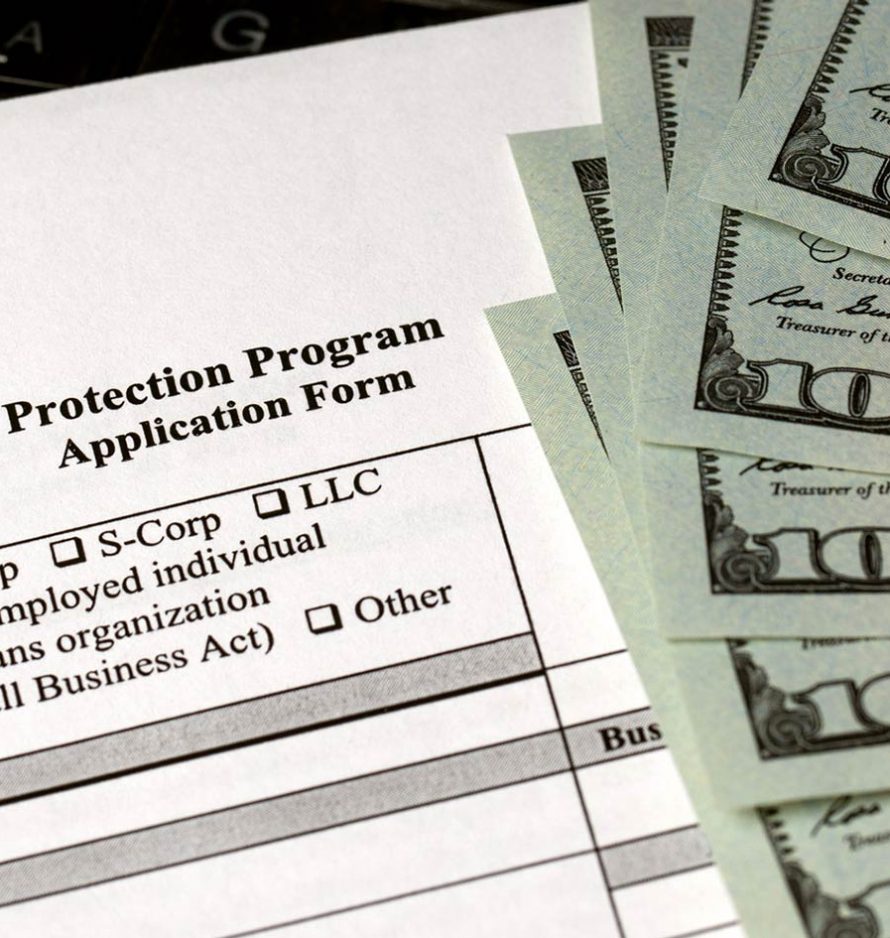Does PPP have you c-o-n-f-u-s-e-d? You’re not alone. We hunted down an expert to answer your most burning questions.
Oliver Smith is prepared to ask for forgiveness.
The veteran jewelry designer and owner of two Oliver Smith Jeweler stores—in Scottsdale, Ariz., and Aspen, Colo.—was among thousands of store owners and independent retailers to land a Paycheck Protection Program (PPP) loan in 2020 from the federal government’s Coronavirus Aid, Relief, and Economic Security or CARES Act.
As the COVID-19 pandemic battered the American economy last spring, the U.S. government offered PPP loans to help businesses retain employees and stabilize a jittery marketplace. “Bound and determined” to continue paying his 15-member team as store traffic declined upward of 80%, Smith applied in April to ease the financial burden and received funding by mid-month.
Provided a business owner satisfies specific criteria—namely, directing most of the PPP funding to employee compensation over a defined time period—the PPP loan would be forgiven, according to the legislation. However, the path to absolution remains under construction.

“I’m patient and understanding, knowing there’s still a lot to be decided here, but also consistently monitoring the information that comes out regarding relief or payback,” says Smith, who opened his flagship Scottsdale store in 1985.
Federal legislation is notorious for caveats and fine print, and PPP funding—a second round of which became available in early January and operates under similar forgiveness terms—is no different. With the help of Jonel Hein, deputy district director of the U.S. Small Business Administration (SBA) South Florida District Office, JCK found answers to some key PPP-related questions.
How and when do I need to spend PPP money to be eligible for forgiveness?
While PPP recipients like Smith were initially required to spend at least 75% of their loan amount on employee compensation within eight weeks, the PPP Flexibility Act signed into law June 5 pushed that to 24 weeks. The Flexibility Act also reduced the employee compensation amount to 60%, which enabled business owners to devote more PPP capital to critical expenses like rent and utilities. January’s PPP funding, meanwhile, also accounts for expenses such as physically reshaping a workplace to accommodate social distancing or purchasing protective safety equipment for staff.
Though businesses can assign PPP funds to non-payroll expenses, and with sound reason for doing so, Hein says the more PPP capital devoted to payroll, the better. This, she notes, will create a more streamlined reporting process when it comes to meeting the loan’s reporting requirements.
Are only salaries or wages covered by loan forgiveness, or do bonuses count as well?
Payroll costs include all forms of cash compensation paid to employees, though there is a cap of $100,000 per employee on an annualized basis, the SBA notes.
And what about the owner’s compensation?
Owners can pay themselves with PPP funds, though there are limits. According to the SBA, “the amount of loan forgiveness requested for owner-employees and self-employed individuals’ payroll compensation is capped at $20,833 per individual in total across all businesses in which he or she has an ownership stake.” (A caveat: If borrowers received their PPP loan before June 5, 2020, and elected to use the eight-week covered period, the cap drops to $15,385.) In contrast, employee compensation is capped at $46,154 over a 24-week covered period.
“The spirit behind the PPP loan is focused on keeping employees paid, not to provide owners a windfall,” Hein says.
I received an EIDL Advance grant, too. How does that affect PPP forgiveness?
In COVID-19’s early days, many small businesses received an Economic Injury Disaster Loan (EIDL) Advance, a cash grant of up to $10,000 that did not have to be repaid. Created by the CARES Act, the grant provided businesses an initial cash injection as the PPP got up and running.
Original plans called for any EIDL Advance funds to be deducted from the PPP recipient’s forgiveness amount. In late December, however, the federal government reversed course. Now, EIDL Advance amounts will not need to be deducted, an undeniably positive development for PPP borrowers that also landed EIDL Advance funds.

So, when can I apply for forgiveness?
There’s no immediate pressure. In fact, a loan forgiveness application may be filed any time before the maturity date of the loan, which is either two or five years from loan origination.
But know this: “If a borrower does not apply for loan forgiveness within 10 months after the last day of the borrower’s PPP covered period, [then] loan payments are no longer deferred and the borrower must begin making payments on the loan,” according to the SBA.
Hein offers the example of a business that received a loan in mid-April 2020 with a covered period of eight weeks. Following that eight-week term, the business has an additional 10 months, about one year from the loan’s issuance, during which no payments are due. When that 10-month period passes, a business must start making payments on the loan, though owners have until the loan’s maturity date to apply for forgiveness.
“Stay in contact with your lender to understand when they are going to accept applications and what that process will look like,” Hein says.
With things changing so often, where can I access the most up-to-date, relevant information regarding PPP loans and forgiveness?
Hein says the SBA has tried to create simplified resources for small business owners at sba.gov/ppp. In addition, SBA resource partners can assist business owners free of charge; for example, local SCORE chapters (providing mentoring and education to small businesses) and Small Business Development Centers scattered across the United States are well positioned to provide support.
Finally, the National Federation of Independent Business has continued providing resources for business owners, including fact sheets and webinars, while PPP–issuing banks should be actively following developments to help their clients navigate the forgiveness process.
How long should I keep my PPP records?
Audits are possible here, so hold onto PPP payroll records for four years and non-payroll records for three years.
“Anytime you’re working with a government agency, it’s a smart move to keep your paperwork in order,” Hein says. “I would also suggest keeping a narrative so you can remember what you did, when, and why.”
(PPP application: Getty Images)
